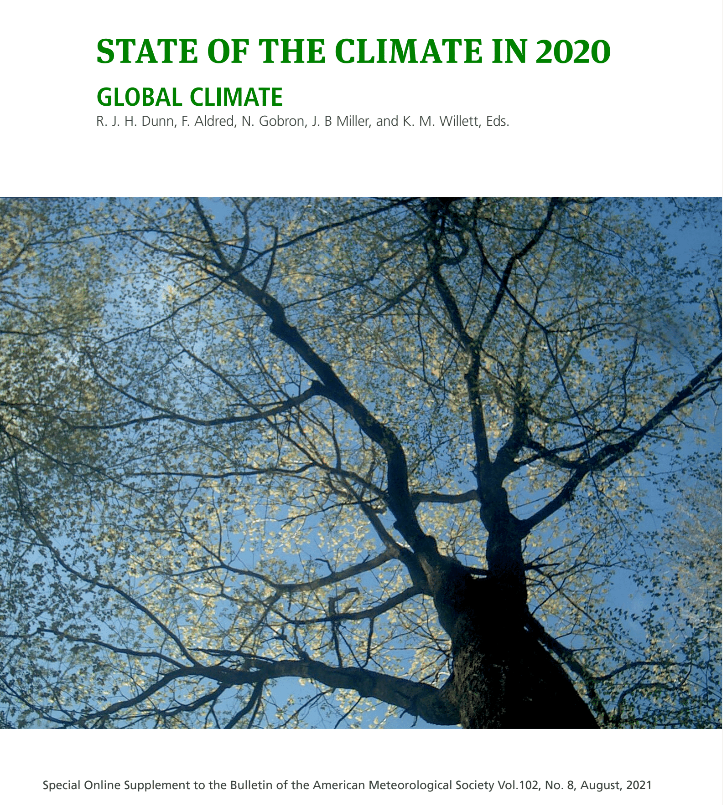
The latest report of the Bulletin of the American Meteorological Society on the State of the global climate, published today, confirms that 2020 was among the three warmest years on record, even with a cooling La Niña influence in the second half of the year.
The report found that the major indicators of climate change continued to reflect trends consistent with a warming planet. Several markers such as sea level, ocean heat content, and permafrost once again broke records set just one year prior. Notably, carbon dioxide (CO2) levels in the atmosphere also reached record highs in 2020, even with an estimated 6–7% reduction in carbon dioxide emissions due to the economic slowdown brought about by the global pandemic.
The 31st annual issuance of the report, led by NOAA National Centers for Environmental Information, provides a detailed update on global climate indicators, notable weather events and other data collected by environmental monitoring stations and instruments located on land, water, ice and in space.
Climate change indicators reach record highs
Greenhouse gases were the highest on record. The global annual average atmospheric CO2 concentration was 412.5 parts per million (ppm). This was 2.5 ppm greater than 2019 amounts, and was the highest in the modern 62-year measurement record and in ice core records dating back as far as 800,000 years. The year over year increase in methane (14.8 parts per billion) was the highest such increase since systematic measurements began.
Global surface temperature reached a near-record high. Annual global surface temperatures were 0.97°–1.12°F or 0.54°–0.62°C above the 1981–2010 average, depending on the dataset used. This places 2020 among the three warmest years since records began in the mid- to late 1800s.
Sea surface temperatures reached a near-record high. The globally averaged 2020 sea surface temperature was the third highest on record, surpassed only by 2016 and 2019, both of which were associated with El Niño events.
Global sea level was highest on record. For the ninth consecutive year, global average sea level rose to a new record high and was about 3.6 inches (91.3 mm) higher than the 1993 average, the year that marks the beginning of the satellite altimeter record. Global sea level is rising at an average rate of 1.2 inches (3.0 cm) per decade due to changes in climate. Melting of glaciers and ice sheets, along with warming oceans, account for the trend in rising global mean sea level.
According to JRC scientist Nadine Gobron, who co-edited the global chapter and was among the scientists from around the world who contributed to the report,
“this report includes new indicators that show how research using space observations, such as Copernicus data, makes a significant step forward in assessing climate change impacts on our planet.”
Further information
- State of the Climate 2020
- JRC Fraction of Absorbed Photosynthetically Active Radiation (FAPAR) project
- Copernicus – Europe’s Eyes on Earth
Related Content
JRC Fraction of Absorbed Photosynthetically Active Radiation (FAPAR) project
Details
- Publication date
- 25 August 2021
